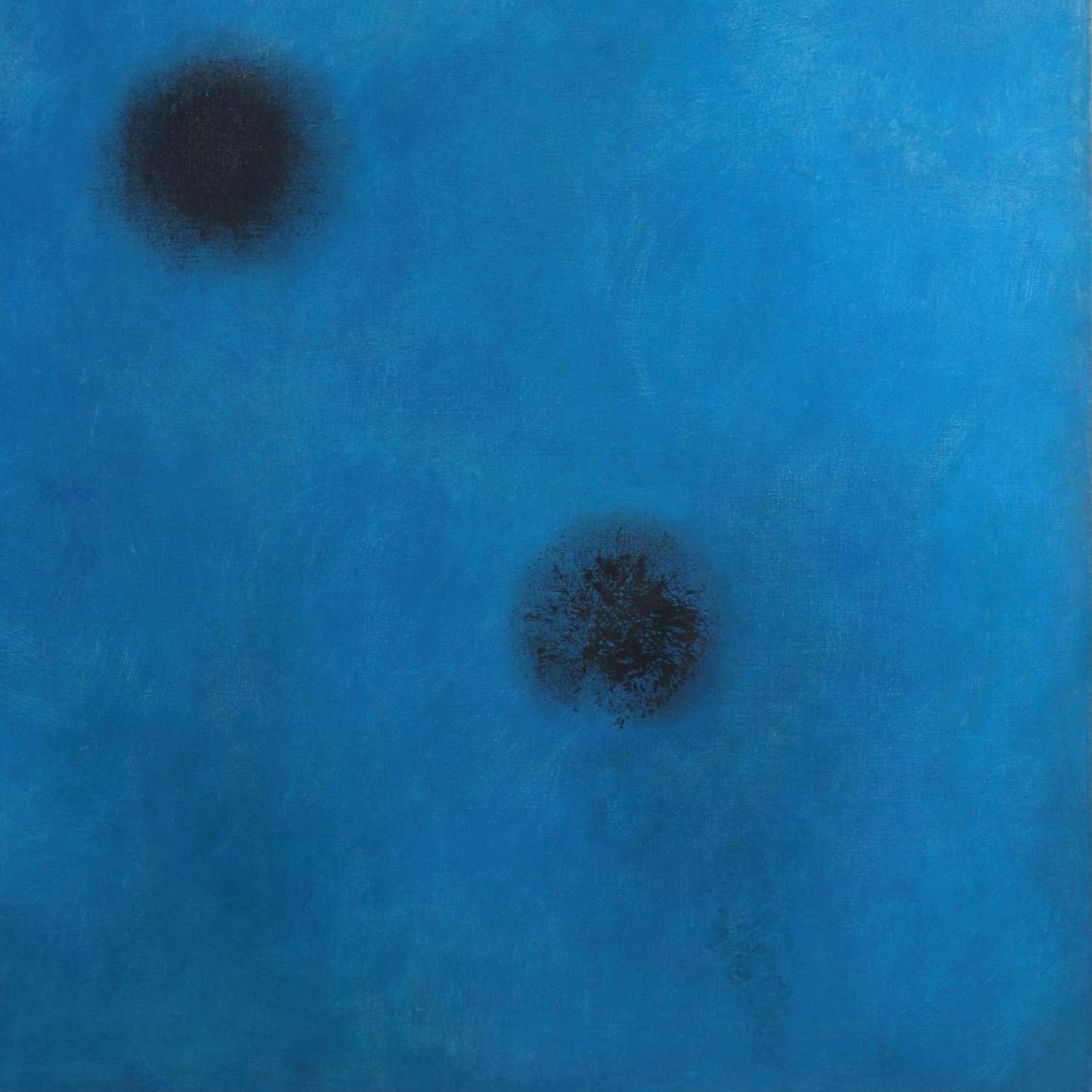Blue I (1961) is one of Joan Miró’s most celebrated late works, part of the renowned triptych Blue I, II, III, which together embody the distilled purity and poetic minimalism that define his mature style. In Blue I, Miró reduces the visual field to its bare essentials, using an expansive blue ground as both atmosphere and emotion. The blue is not simply a backdrop—it is a vast, resonant space that suggests sky, sea, or an interior dream world. The simplicity of the composition is deliberate: Miró sought to create paintings that breathe, that hold silence, and that evoke sensation through the fewest possible marks.
Across this luminous field, a small constellation of precise, gestural strokes activates the surface. Thin black lines curve and dart with a calligraphic lightness, forming ambiguous shapes that hint at figures, celestial bodies, or symbolic signs. A punctuating red dot introduces a spark of intensity, anchoring the viewer’s gaze and creating a moment of visual tension within the serene expanse. These minimal elements feel almost weightless, as though drifting across an endless horizon.
Blue I exemplifies Miró’s mastery of restraint. The painting’s power lies not in complexity but in the interplay between emptiness and presence. Every mark has purpose; every gesture is a quiet event suspended in an otherwise boundless space. The vast blue evokes calm, contemplation, and a sense of the infinite, while the contrasting strokes inject spontaneity and life.
Miró described this late period as an attempt to reach the “maximum of intensity with the minimum of means,” and Blue I stands as a perfect expression of that aim. It is both meditative and vibrant, a work that invites viewers to slow down, breathe, and enter a world where a few simple marks can suggest an entire universe.

















